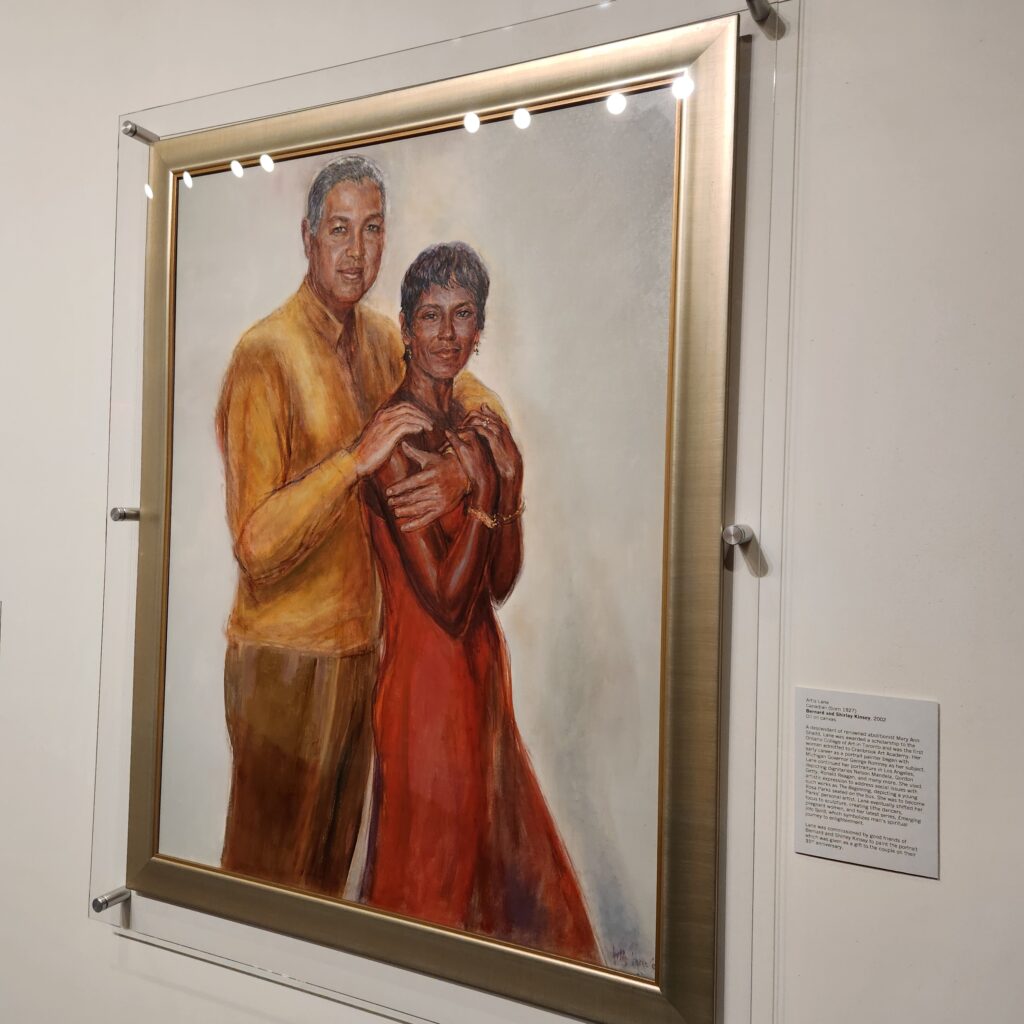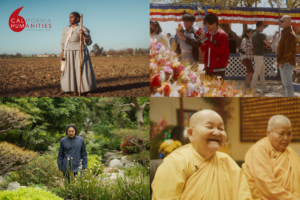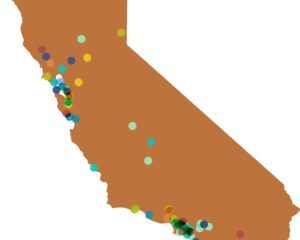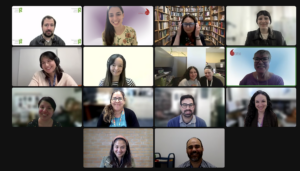Above: California Humanities staff at the entrance to the Kinsey Collection at SoFi Stadium, March 28, 2024.
In March, California Humanities staff came together in Los Angeles for another special partner program with Zócalo Public Square, part of our National Endowment for the Humanities-supported United We Stand initiative. Below are some highlights!
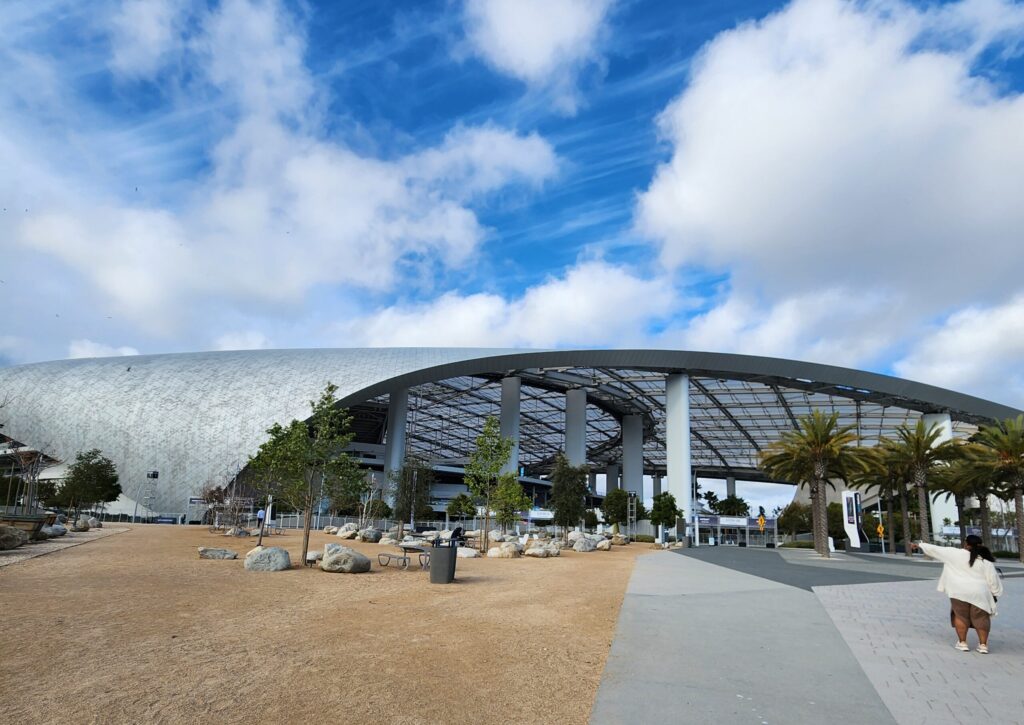
SoFi Stadium is not only a sports and entertainment venue that is home to the Los Angeles Rams, Los Angeles Chargers, and other large concert events, but for more than two years it has also hosted the Kinsey Collection of African American Art & History. On March 28, Zócalo and California Humanities presented an insightful panel program inside the collection space on the stadium’s second level titled Can a Football Stadium Be a Black History Museum?. Set beside artwork and ephemera only steps away from the entrances to Stadium Suites, the program explored the value of having Black art and history where it is typically unexpected.
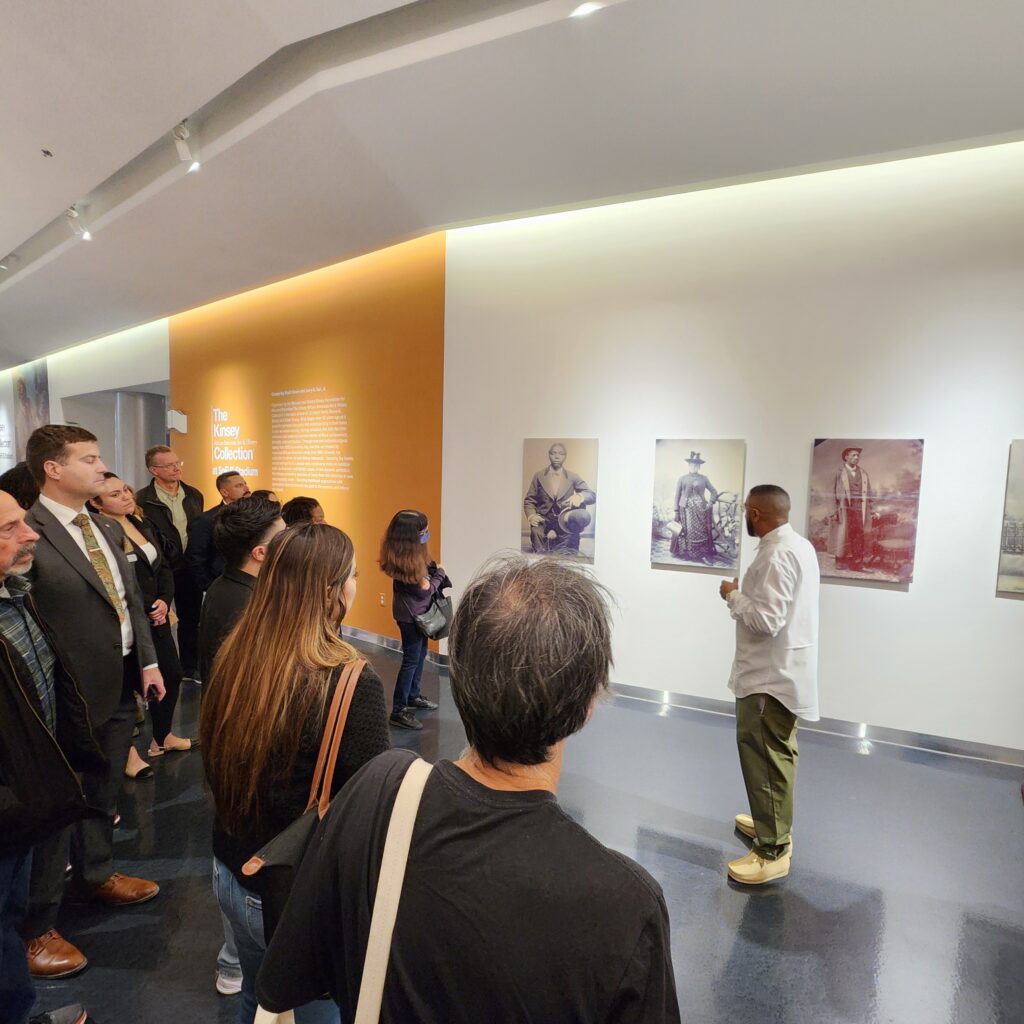
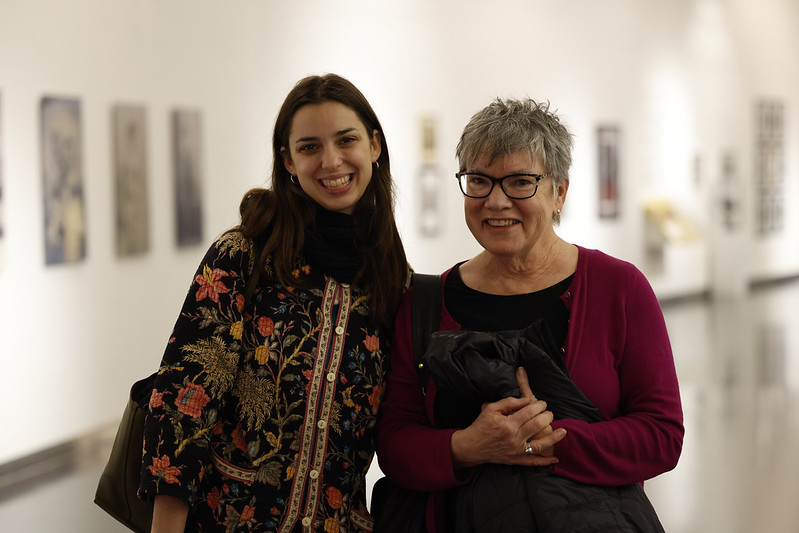
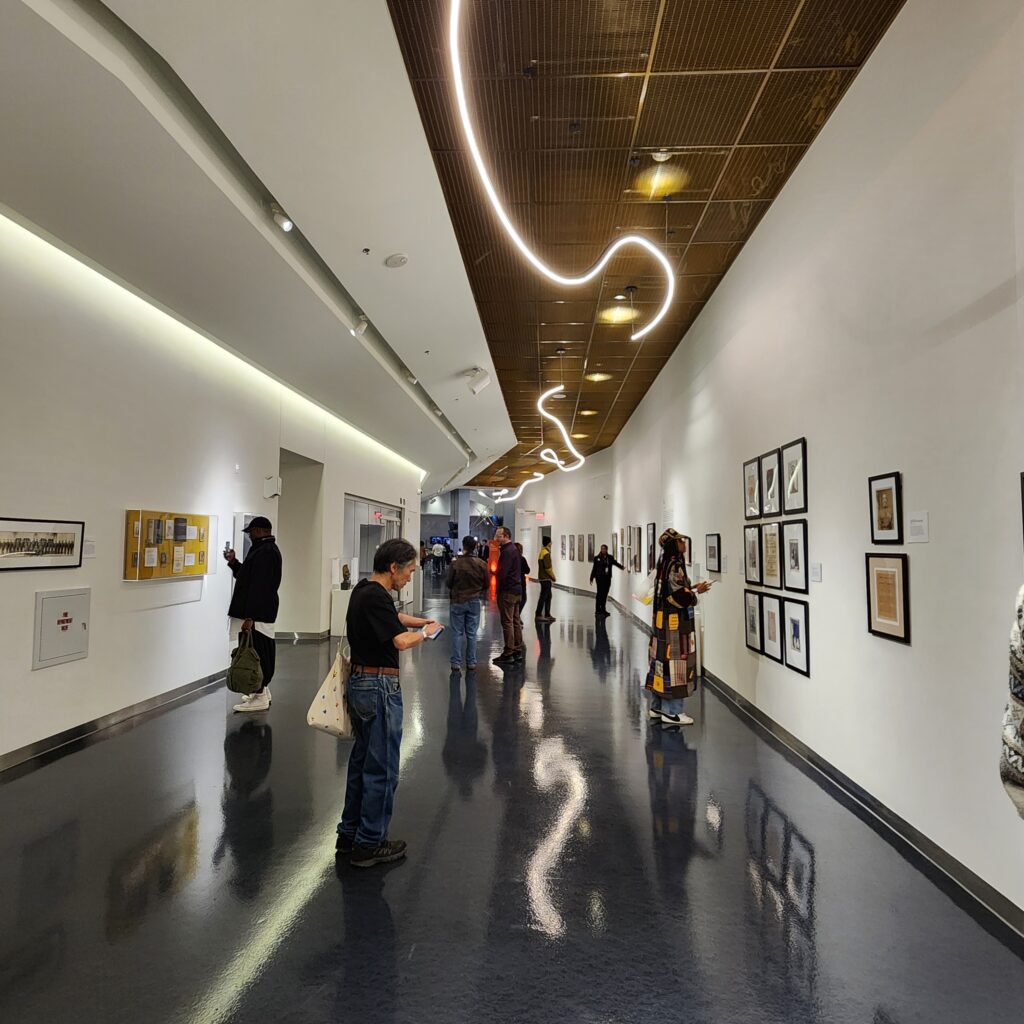
En route to the bathroom or on a beer run, visitors may find themselves taken off guard by letters from Martin Luther King Jr. and Malcolm X, photographs of LA’s early-20th-century Black firefighters and World War I Harlem Hellfighters, not-often-seen formal portraits of 19th-century Black men and women, and works by major Black artists.
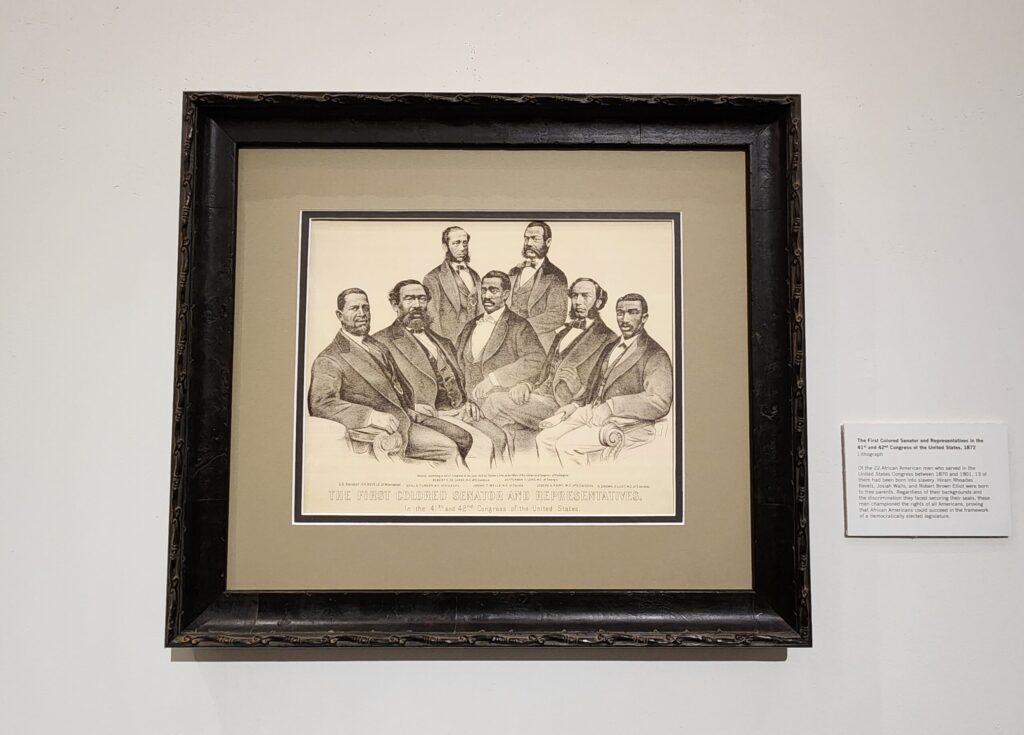
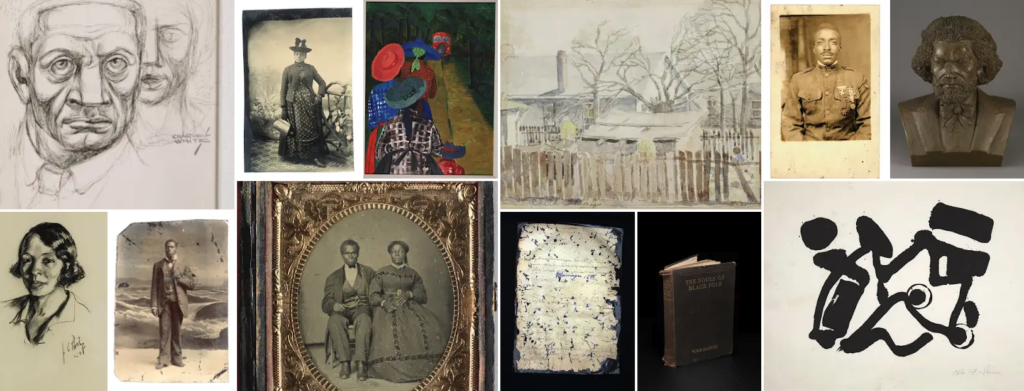
Curator Khalil Kinsey led a panel sourced from the world of art and sports: Artist and Bloom & Plume founder Maurice Harris, sports agent and former NFL player Jacques McClendon, and poet aja monet. In an hour-long discussion, they explored why one of the world’s largest private collections of Black art and historical objects was specifically displayed at one of the world’s grandest football stadiums, and why it matters.
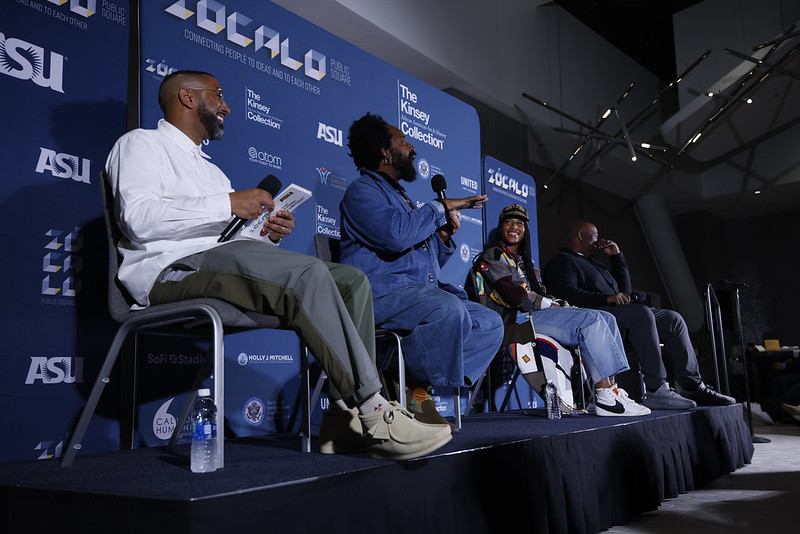
In his opening, Kinsey acknowledged that bringing the collection to SoFi was an experiment, a first-of-its-kind opportunity with many variables to consider and an uncertainty about its effectiveness. “This structure represents erasure, represents destruction,” said Kinsey, referring to the stadium and its relationship to the people of Inglewood. In referring to the football players who play close by, Kinsey acknowledged how the NFL is dealing with “all types of issues, when it comes to race matters,” and how displaying the collection at SoFi could be “a small part of lending a broader view of humanity for the athletes on the field.”
“But,” he added, “we were eager to see its effectiveness because we’re terribly interested in improvement.”
After commenting that the placement of the collection was at-first “random,” Harris, along with monet and McClendon, leaned in and made a case for why it matters to make the history represented in the Kinsey Collection as accessible as possible.
“When I see African American art in a stadium, what it means for me is access, opportunity, joy,” said McClendon. “Football has an immense platform and immense responsibility.”
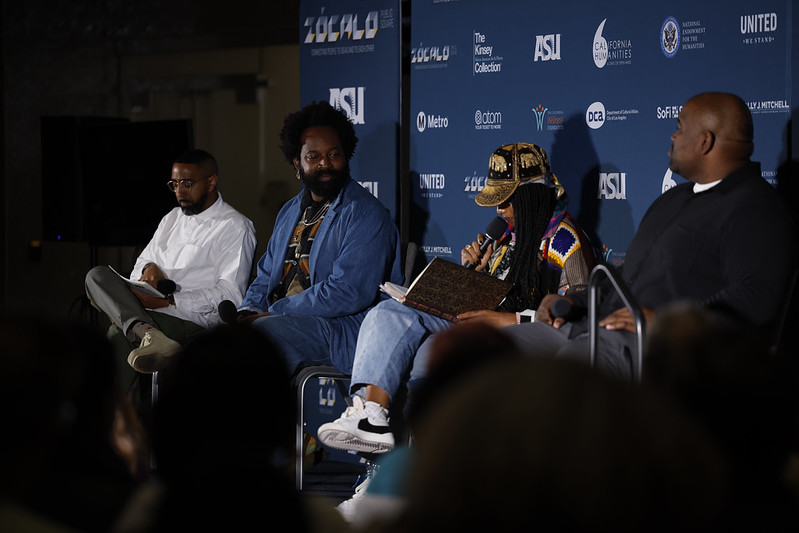
“I’m in the business of being nonsensical, but that’s how beautiful things happen, Harris said, alluding to how the exhibit is helping people get to a place where experiencing history and art in this space is normalized. “You’re moving the needle and pushing the conversation forward because you’re meeting people where they’re at.”
monet also talked about the importance of normalizing Black history and art inside spaces like a football stadium. “When it’s commonplace, when it’s just there, in the air you breathe, you’re not seeking something else to validate you, you know that you are part of the fabric of what makes things run…so you know that there could not be that big NFL executive without you, without your story and what your people contributed to this place.” The collection’s value in this particular space in Inglewood reflects the same value of bringing humanities experiences to as many different types of spaces as possible: “So then you walk a little differently when you come into this space, you demand different things…that is the role of being an engaged human.”
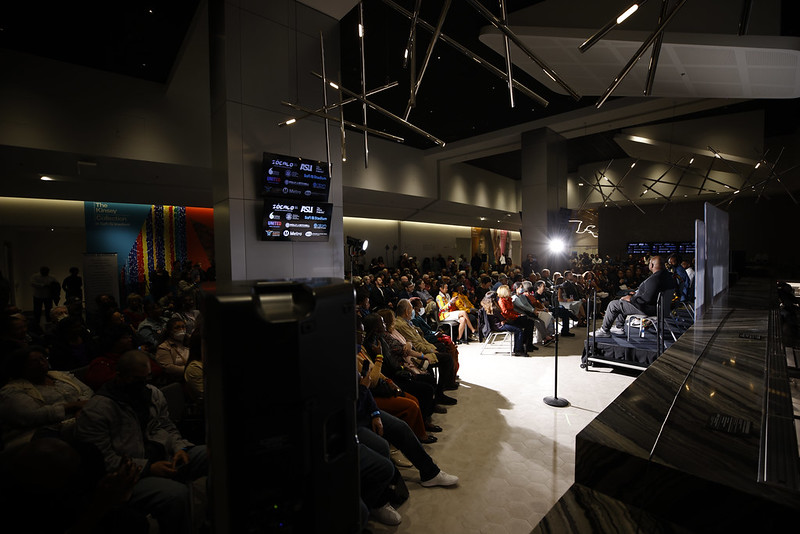

Watch the program at the link, and stay tuned for more information on our next program in our series with Zócalo later this spring!
More to engage with:
Read an in-depth reflection on the night’s events from Jackie Mansky, writing for Zócalo.
View more photographs from the event.



